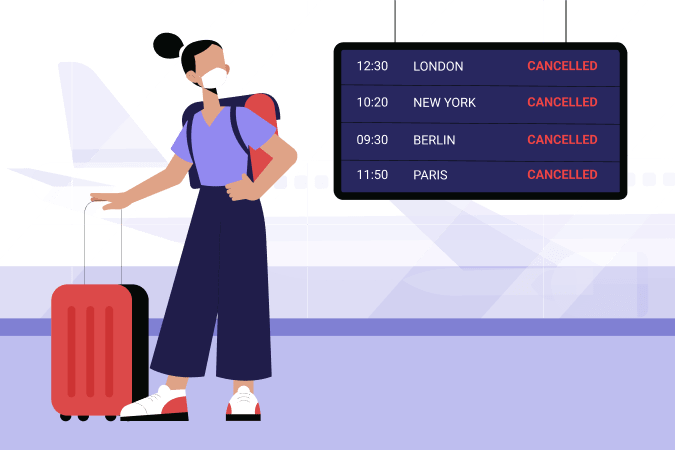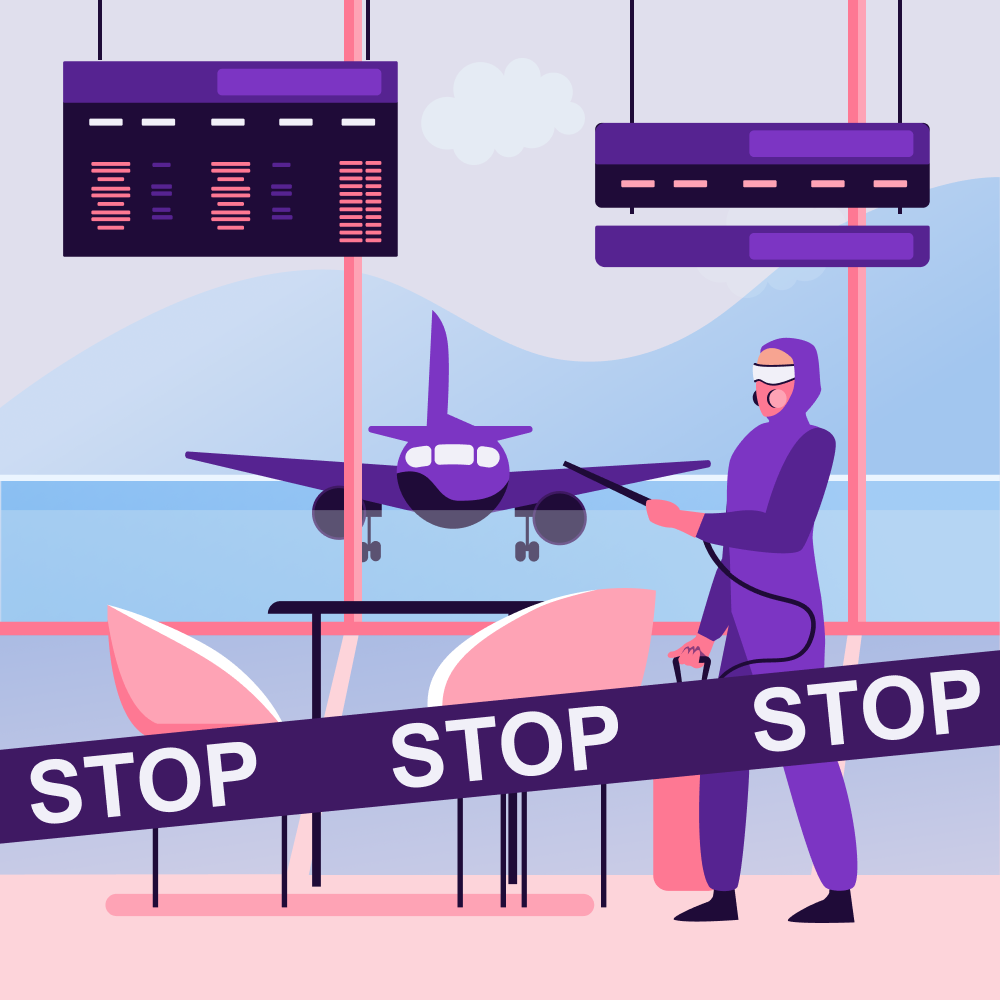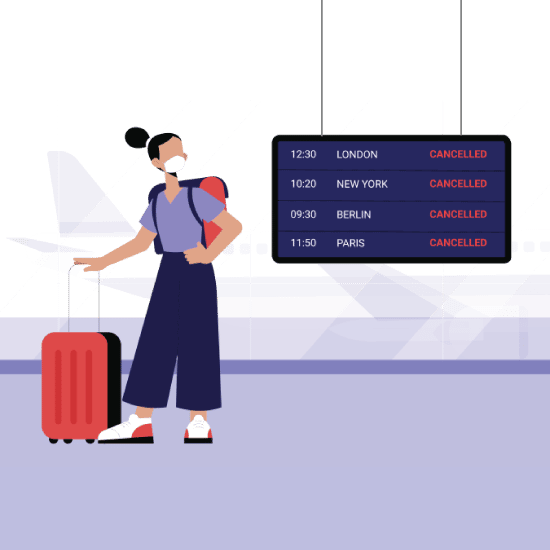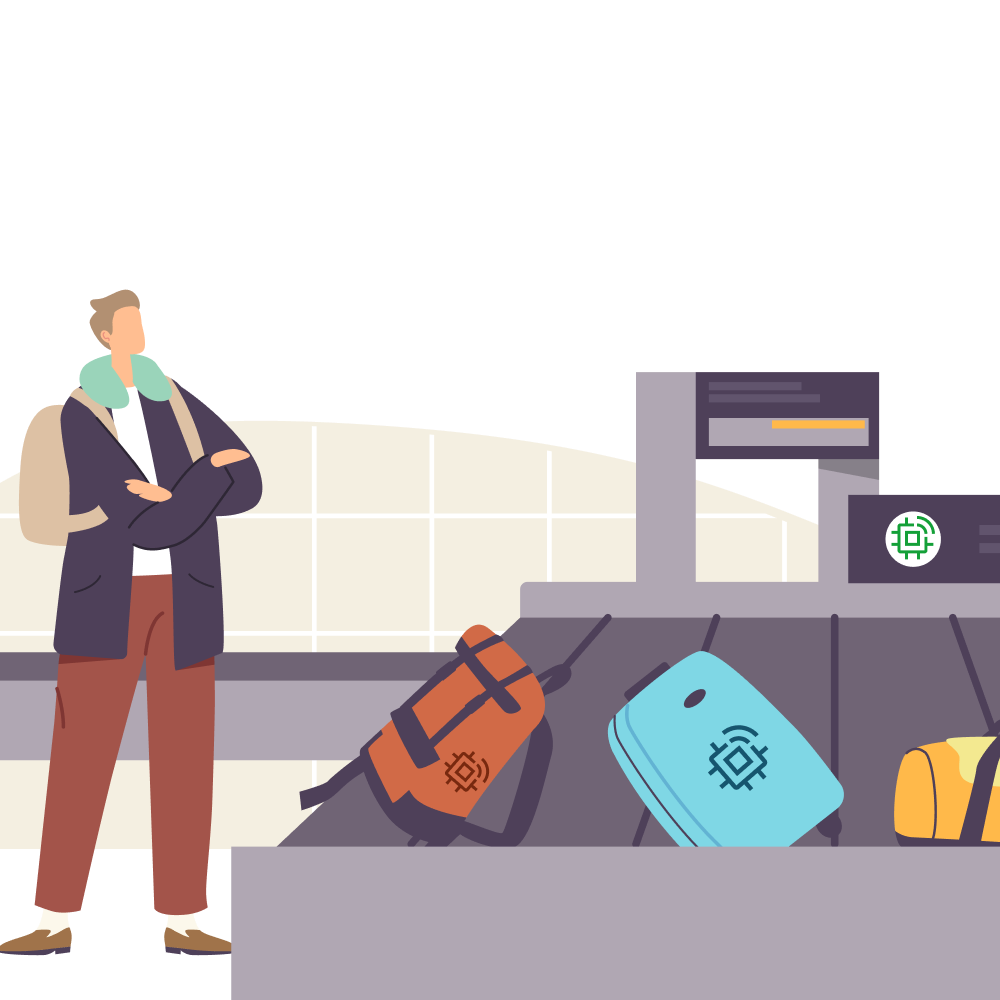How COVID 19 broke the Airline Pricing Model?
How COVID 19 broke the Airline Pricing Model?
How COVID 19 broke the Airline Pricing Model?

Dynamic Pricing in Airlines
By far, since 1980s dynamic pricing has been the highlight of flying experiences for travelers around the world. It is due to dynamic pricing, that you can see the prices of flights change in few weeks, hours or even in a day. Some interesting cases of Dynamic Pricing can be described as below:
- On a specific day and time of the day, you would find all airlines have the same and identical price of the tickets
- The price of a round trip ticket to be substantially less than the price of one-way ticket to the same destination
- The price of a to flight from the point of origin to destination would be very different from the price of the ticket from the destination to the point of origin
- The price of the ticket from the point of origin to the destination is 10 times more than the same point of origin to another destination which is just 1000 miles less than the other destination
- The price of the ticket from the point of origin to a destination point maybe very different from the price of the ticket from the same point of origin to a destination point which is just 10 miles away from the other destination
All these use cases do not make sense to the average traveler but there is a definite science and a logical framework in place that enable the airlines to reach appropriate pricing decisions however weird or illogical they may appear. Let us examine some the pricing strategies in our next section
How do airlines price their flights?
Let us look at an overview of what factors come in consideration for airlines when they price their flights
01
Leisure Traveler versus Business Traveler:
The airlines generally price the flights in such a manner that the leisure traveler gets the higher discount and the business traveler is getting a higher price for the same seat. This is because the leisure traveler has to pay from his own pocket and the business traveler does not have to pay from his own pocket.
02
Days before actual flight:
The price will fluctuate based on the no of days the booking is done before the actual date of flight
03
Fare Buckets:
The different airline companies have different fare buckets like B, Y, H, K, M, L, G, V, S, N, Q and O and so on and so forth. Further, the airlines price the seats according to the demand. Sometimes, if the demand is less then it is possible the higher priced seats are available at lower fare buckets or if the demand is higher then the seats with less privileges and basic allowance seats are pushed to higher price buckets
04
Destination Port:
This is a peculiar case of pricing as it is dictated by the presence of competing airlines companies at that port. If the particular airline company does not have lot of competing airlines at a particular airport, then the pricing will reflect that condition.
05
Specific Events and Seasons:
The pricing reflects any specific event taking place in the destination city or any specific season that generates specific demand patterns resulting in different pricing strategies.
Minimum Length of Stay – The Peculiar Case of Dynamic Pricing
In this section, we detail out a peculiar case of dynamic pricing. As a specific example, consider that on a specific date the ticket from NY to London, one way, would cost around 2500 USD. However, the same route, round trip ticket would cost 600 USD. Which means a whopping discount of almost 75%. So, people would wonder as to how is it possible that a case like this would have some logical thinking behind it wherein the round trip ticket is 75% less costly than the cost of the one way ticket for the same point of origin and destination point. The answer lies in the minimum length of stay clause that you would find in the return ticket. You will find that generally in such cases, the return ticket would force you to stay over the weekend in the destination city. This means that if you are leisure traveler, you would not mind taking a return flight after the weekend, however if you are a business traveler, you would definitely want to return back before the weekend and hence the airline forces you to pay more on the one way trip. Logical Now? Let’s move on to the next peculiarity
Maximum Length Of Stay – The Peculiar Case of Dynamic Pricing
Here you have a another peculiar case wherein the traveler would have to pay more or less fare for the same route depending upon where he is based. This is designed to make it harder for people to purchase cheaper tickets from overseas. For example, Garuda Indonesia’s Business Class fares from Hong Kong to Australia are about half the price of the same flights from Australia to Hong Kong. But the cheaper round-trip fares out of Hong Kong are only available if you spend a maximum of 30 days in Australia. Somebody that lives in Australia is likely to want to stay much longer. But for somebody based in Hong Kong, 30 days in Australia is probably sufficient.

COVID19 – When all airline pricing strategies failed
After the COVID-19 outbreak, we have seen travel industry going through turmoil and tribulations as people have stopped travelling. We feel airline pricing models would be broken because of low demand. Low demand is an issue but it is not the pivotal reason that the model is broken. If we know that the demand would be down by 80% in 2020 and 50% by 2021 then the airlines could structure their costs and staff and other factors in a manner that could help them survive. However, the problem lies elsewhere. Let’s examine the problem in depth
- The pricing of airline seats has been governed by computers and airlines software for a long time
- The software is programmed to manipulate prices in a manner wherein it lowers the prices to increase the demand which is a normal cycle
- However, from early March 2020, the demand did not go up inspite of the prices getting lower and lower
- So we may think, that the demand is reason for the prices model being broken which is not the truth as the revenue management software is programmed to extract maximum revenue irrespective of demand
- This means that airline software is programmed to manage supply and demand simultaneously as airlines find it difficult to match supply to the demand
- The prime reason is that demand in airline industry fluctuates like any other industry but in airlines it is impossible to match supply to the fluctuating demand as planes and schedules take a huge effort to be manipulated and changed so nimbleness to match fluctuating demand is impossible
- Hence, a significant part of the airlines strategy to match supply and demand involves regulating demand
- The best tool to do that is to manage the price margins in such a manner that the demand is regulated.
- Airlines rely on data to predict the price changes to different flights based on the behavior of the travelers which resulted in price elasticity indexes that helped to predict the right prices and resulting in the right revenue amount for each airline
- However, the pandemic has created a revolution of sorts wherein the airlines and the software has no precedent as to how the demand will behave after the pandemic and hence the algorithms for demand regulation have gone haywire
Conclusion
In this article we researched as to how the airlines price their flights, the different strategies and also researched as to what is the reason that after COVID 19 these strategies have failed. However, then the question arises that if the models are broken then what should be done by the airlines to predict demand and how they can track demand metric quickly to create robust pricing strategies. Let us examine this in the forthcoming articles and see where we reach in this journey. CIAO
Have an Inquiry?

Mithun S
Mithun is an avid technology geek at heart and is deeply interested in AI, Metaverse and other emerging technologies. He heads the R&D Practice at AARCHIK Solutions








